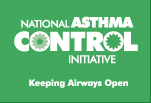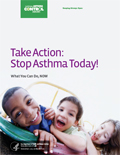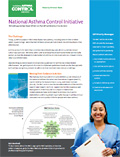Schools and Childcare Settings
About one in every 10 children under the age of 18 has asthma, making it one of the leading chronic childhood diseases in the United States, and a major cause of childhood disability and school absenteeism. Asthma can limit a child’s ability to play, learn, and sleep—all critical to his or her development.
With the appropriate care, however, most children with asthma can participate fully in all activities. And you can help them succeed.
Make asthma a priority for everyone
All schools and childcare settings should prepare and implement a comprehensive plan to address asthma, including how to prevent and respond to emergencies. The plan should outline specific actions, policies, and procedures consistent with evidence-based asthma guidelines and best practices. Such steps can create dramatic improvements in a child’s quality of life, especially when school administrators, nurses, and other staff work as a team with students, parents/guardians, and health care providers to implement a coordinated response to asthma.
Use the following 10 tips and the additional resources listed below to assist children and youth and their families to keep asthma under control, both in and out of the classroom.
- Assemble a team to coordinate strategies for asthma control. Involve administrators, nurses, teachers, coaches and other staff, students, families, and health care providers.
- Create a comprehensive asthma management program. Start with the How Asthma-Friendly Is Your School? and How Asthma-Friendly Is Your Child Care Setting? checklists in English and Spanish.
- Know the legal requirements in place to protect children and staff that have asthma or other special needs. Consult child care license requirements and state laws on the administration, and student self-administration, of asthma medications.
- Provide staff training on asthma so they can recognize asthma symptoms and follow policies and procedures for administering medications and responding to emergencies.
- Get an updated written asthma action plan for each child from the family and health care provider, with information on the child’s medications, triggers, and other concerns.
- Provide good indoor air quality. Prevent unhealthy exposure to allergens, including dust mites, pests (rats, mice, cockroaches), classroom pets, molds, bacteria, and pollen, and to irritants, such as chemical fumes, tobacco smoke, ozone (outdoors), and pesticides. Use integrated pest management. Ban smoking. Stop nearby bus and car idling.
- Provide opportunities for safe, enjoyable physical activity. Encourage full participation in physical activities when child is well and modified activities when medically necessary. Keep student’s asthma medications nearby and accessible, before, during, and after the activity.
- Ensure tobacco-free facilities and events. Post no-smoking signs. Offer tobacco cessation programs to students, families, and staff.
- Facilitate family access to resources, including asthma education, flu shots, and health, mental health, recreational, and social services.
- Recognize achievement. Present awards to facilities, programs, and staff for meaningful efforts to address asthma. Involve school board members, other officials, and the media.



















 Twitter
Twitter
 Facebook
Facebook YouTube
YouTube